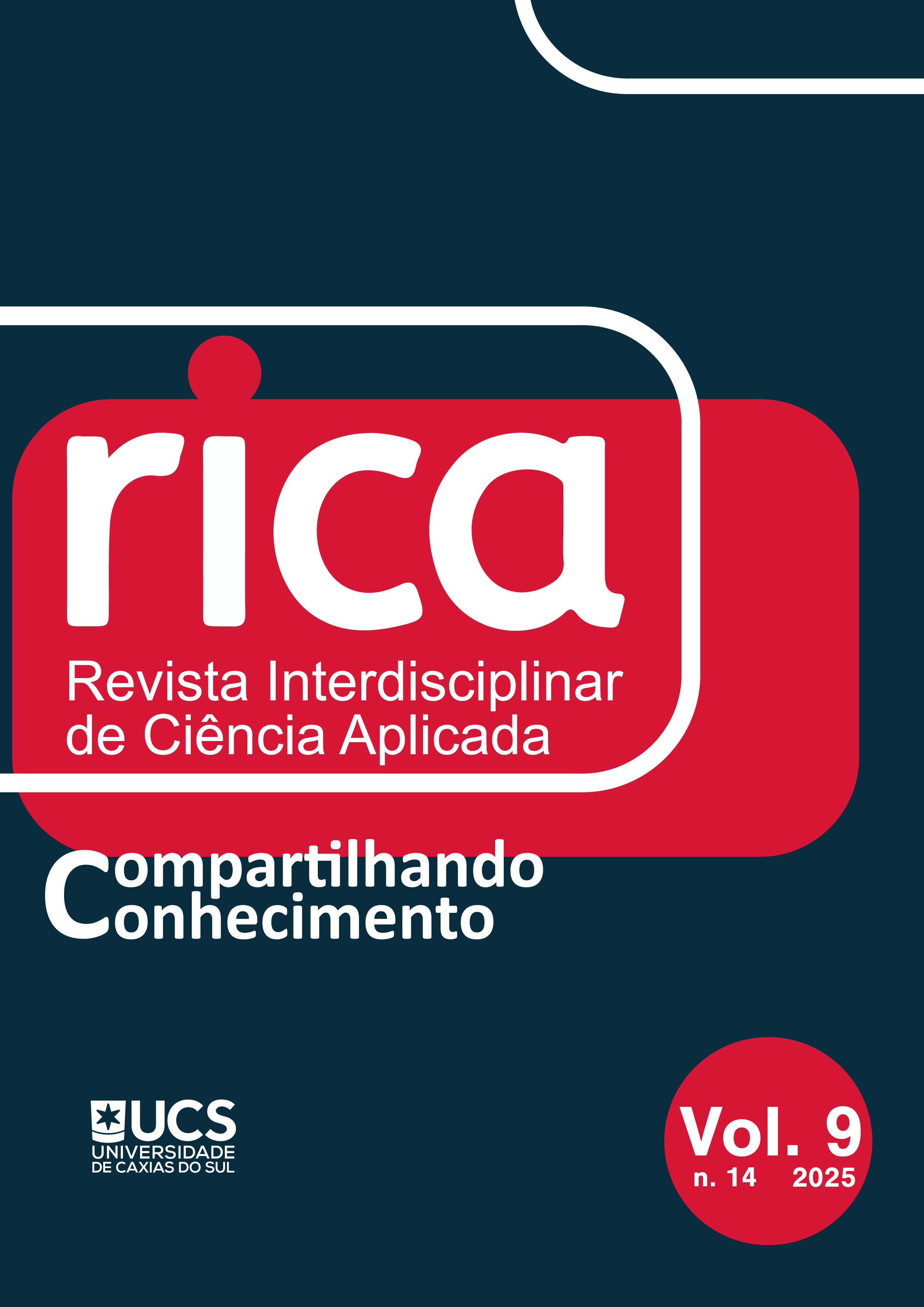Evaluation of shrinkage in concrete with different polypropylene fiber contents
DOI:
https://doi.org/10.18226/25253824.v9.n14.07Keywords:
Concreto, CRF, Reforçado com fibras, Retração, DurabilidadeAbstract
The search for more durable and sustainable construction materials drives the development of new technologies in the construction sector. Concrete, widely used, benefits from the incorporation of polypropylene fibers, which enhance its strength and toughness. However, shrinkage remains a significant challenge, causing cracks and compromising the material's durability. This study evaluated the mechanical behavior of fiber-reinforced concrete with polypropylene fibers, analyzing both fresh and hardened states. Different fiber contents were used, and slump tests, compressive strength, flexural tensile strength, and dimensional variation (shrinkage) analyses were performed. Results showed that increasing fiber content reduced the workability of the concrete, especially at 0.10%. The tensile strength initially increased with the addition of fibers, while the compressive strength decreased after 42 days. Shrinkage was lower in fiber mixtures, particularly at 0.10%, due to the fibers' ability to stitch microcracks and better distribute stresses, reducing cracking. This study demonstrates the potential of polypropylene microfibers to improve the properties of concrete, making it more durable and resistant.
References
Ahmad, J. et al. Mechanical performance of concrete reinforced with polypropylene fibers (PPFs). Journal of Engineered Fibers and Fabrics, v. 16, p. 155892502110603, jan. 2021.
ASSOCIAÇÃO BRASILEIRA DE NORMAS TÉCNICAS. NBR NM 248: Agregados - Determinação da composição granulométrica. Rio de Janeiro: ABNT, 2003.
ASSOCIAÇÃO BRASILEIRA DE NORMAS TÉCNICAS. NBR 5738: Concreto - Procedimento para moldagem e cura de corpos de prova. Rio de Janeiro: ABNT, 2015.
ASSOCIAÇÃO BRASILEIRA DE NORMAS TÉCNICAS. NBR 13279: Argamassa para assentamento e revestimento de paredes e tetos - Determinação da resistência à tração na flexão e à compressão. Rio de Janeiro: ABNT, 2005.
ASSOCIAÇÃO BRASILEIRA DE NORMAS TÉCNICAS. NBR 15261: Argamassa para assentamento e revestimento de paredes e tetos - Determinação da variação dimensional (retração ou expansão linear). Rio de Janeiro: ABNT, 2005.
ASSOCIAÇÃO BRASILEIRA DE NORMAS TÉCNICAS. NBR 16697: Cimento Portland - Requisitos. Rio de Janeiro: ABNT, 2018.
Assunção, W. R. et al. Análise estatística do comportamento mecânico do concreto híbrido reforçado com aço e fibras de polipropileno. Brazillian Journal of Development. 2021.
Barluenga, G. et al. Rheology and Build-Up of Fresh SCC Pastes Evaluated with the Mini-slump Cone Test. Rilem bookseries, p. 160–167, 24 ago. 2019.
Borges, A. P. S. N. Estudo das propriedades de concretos com adição de fibras vegetais e de polipropileno para uso em paredes estruturais. 90 p. Dissertação (Mestrado), Faculdade de Engenharia Civil, Universidade Federal de Uberlândia, 2017.
Callister, W. D. JR. Ciências e Engenharia de Materiais: Uma introdução. 10ª. Edição LTC Editora. Rio de Janeiro, 2020.
Carnio, M. A. Aspectos gerais sobre o uso do concreto reforçado com fibras no Brasil: produção, projeto, tecnologia, normalização. In: Revista IBRACON Concreto & Construções. 87. ed. São Paulo: [s.n.]. p. 26–32.
Fugiyama, M. M. Estudo do comportamento mecânico de vigas de concreto armado com barras poliméricas reforçadas com fibra de basalto e fibras descontínuas. 2022. 108 f. Dissertação, Programa de Pós-graduação em Sistemas de Infraestrutura Urbana, Pontifícia Universidade Católica de Campinas, Campinas, 2022.
Guimarães, D. Avaliação das Propriedades de Concretos Reforçados com Fibras de Aço para Utilização em Pisos Industriais. 2015. 180 f. Dissertação de Mestrado (Pós-Graduação em Engenharia Civil) – Programa de Pós-Graduação em Engenharia Civil, Universidade Federal do Rio Grande do Sul, Porto Alegre.
Irshidat, M. R. et al. Dosage Optimization of Polypropylene Fiber for Strength Enhancement of Cementitious Composites. Proceedings of the International Conference on Civil Infrastructure and Construction (CIC 2020), 1 fev. 2020.
Jhatial, A. A. et al. Influence of Long Polypropylene Fibre on the Properties of Concrete. Quaid-e-Awam University Research Journal of Engineering, Science & Technology, v. 18, n. 02, p. 38–43, 31 dez. 2020.
Malhotra, S.; Kanoungo, A.; Goyal, A. Influence of Metal, Glass, Synthetic and Natural Fibers on Fiber-Reinforced Concrete – A Review. Latest Trends in Engineering and Technology, p. 451–462, 28 maio 2024.
Mohiuddin, M. et al. Review on conventional concrete and nylon fiber reinforced concrete behavior. Malaysian Journal of Civil Engineering, v. 35, n. 1, p. 7–15, 28 mar. 2023.
More, F. M. D. S.; Subramanian, S. S. Impact of Fibres on the Mechanical and Durable Behaviour of Fibre-Reinforced Concrete. Buildings, v. 12, n. 9, p. 1436, 13 set. 2022.
Nassif, H. et al. Validation of Predicted Stress in Polypropylene Fiber-Reinforced Self-Consolidating Concrete Under Restrained Shrinkage Conditions. SSRN Electronic Journal, 2021.
Niu, X. et al. Study on the Properties of Multi-Walled Carbon Nanotubes (MWCNTs)/Polypropylene Fiber (PP Fiber) Cement-Based Materials. Polymers, v. 16, n. 1, p. 41, 21 dez. 2023.
Pereira et al. Evaluation of the Addition of Polypropylene (PP) Fibers in Self-compacting Concrete (SCC) to Control Cracking and Plastic Shrinkage Between Different Methods. Materials Research-ibero-american Journal of Materials, v. 26, n. suppl 1, 1 jan. 2023.
Rasheed, Abdulwahab; Akinleye, Tunde Monsuru; TAIYE, Hussein Sahid. Effects of polypropylene fibre on the compressive and splitting tensile strength of concrete. Journal of Materials and Engineering Structures «JMES», v. 5, n. 1, p. 15-22, 2018.
Román, R.; Vinício Cecconello; Schäfer, M. Análise do desempenho mecânico de CUAD com a adição de fibras de aço carbono e de polipropileno. Foco, v. 16, n. 10, p. e3364–e3364, 20 out. 2023.
Scolaro, T. P. (2020). Influência de diferentes fíleres nas propriedades mecânicas e na retração de argamassas autonivelantes (Dissertação de mestrado, Universidade Federal de Santa Catarina, Florianópolis, SC). Recuperado de https://repositorio.ufsc.br/bitstream/handle/123456789/215859/PECV1224-D.pdf?sequence=-1&isAllowed=y
Silva, R. V. DA; Cascudo, O.; Bacarji, E. Compósitos cimentícios com fibras de polipropileno: avaliações no estado fresco e endurecido. Matéria (Rio de Janeiro), v. 27, p. e13190, 28 nov. 2022.
Skadins, U.; Cervenka, J. Lessons learnt from blind competition of shear behavior of fiber-reinforced concrete T-beam. Structural Concrete, p. 1–20, 2023.
Tutikian, B.F., Helene, P.,“Dosagem dos Concretos de Cimento Portland”, Concreto: Ciência e Tecnologia, 1ª ed., capítulo 12, São Paulo, SP, Brasil, IBRACON, 2011.
Wen, C. et al. Early-age autogenous shrinkage and tensile creep of concrete reinforced with polypropylene macro fiber. Journal of Sustainable Cement-Based Materials, v. 12, n. 10, p. 1255–1269, 28 maio 2023.
Yao, W.; Zhong, W. Effect of polypropylene fibers on the long-term tensile strength of concrete. Journal of Wuhan University of Technology-Mater. Sci. Ed., v. 22, n. 1, p. 52–55, fev. 2007.
Downloads
Published
How to Cite
Issue
Section
License
Copyright (c) 2025 Márcio Henrick Silva Costa, Vinicio Cecconello

This work is licensed under a Creative Commons Attribution 4.0 International License.
Authors keep the copyright and cede to the journal the right of publishing first. Published works are licensed under a Creative Commons Attribution 4.0 International (CC BY 4.0) license, allowing the sharing of the work with recognition of the authorship and initial publication in this journal.






